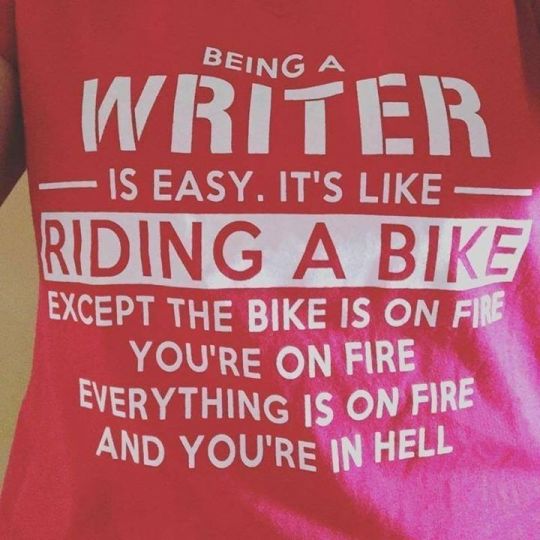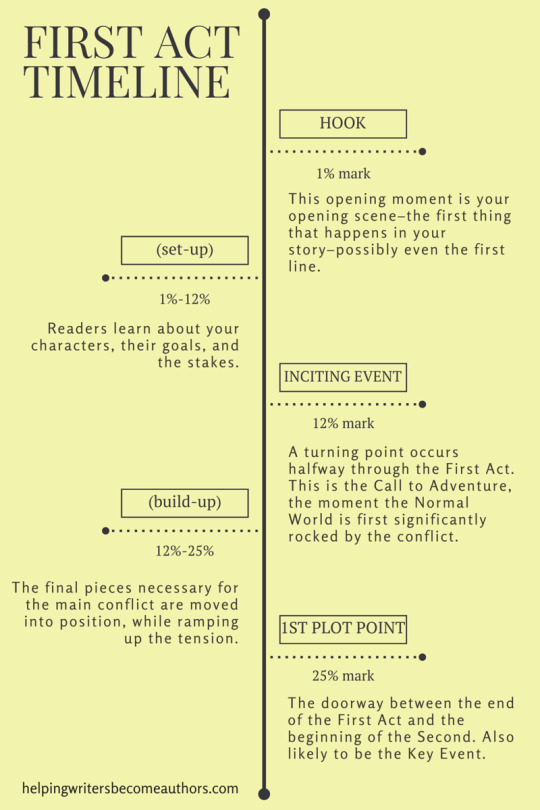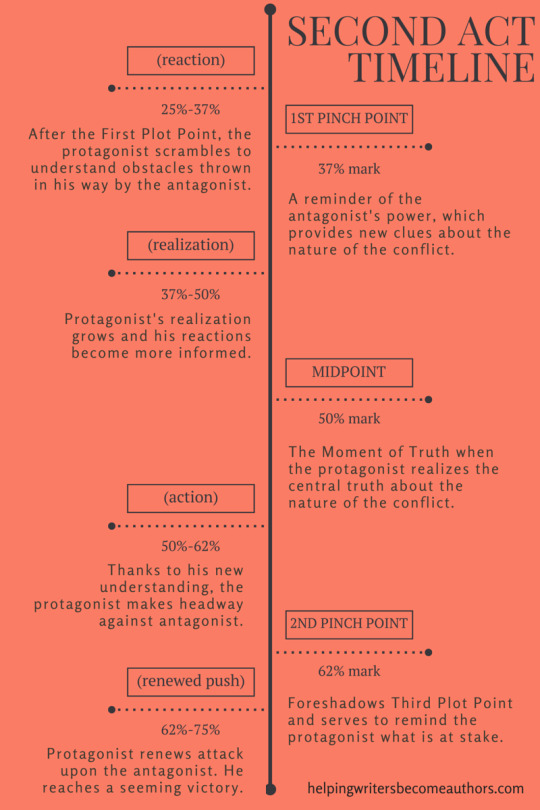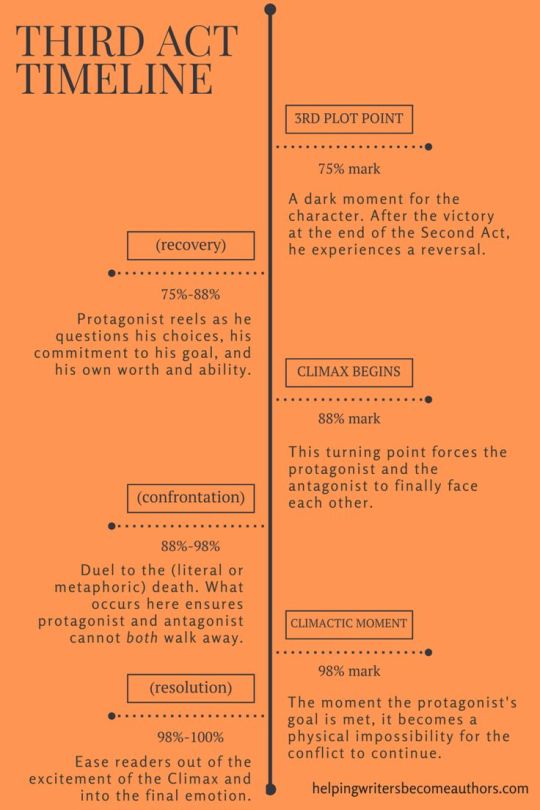The tumblr home to the realistic wolf rpg, Ruins of Wildwood!
Don't wanna be here? Send us removal request.
Photo

Ruins of Wildwood turned 6 today!
2 notes
·
View notes
Text
How to Easily Write 500+ Word Replies
Long paras are a staple of TOS, but we know it can get a little intimidating when you don’t know how to match the colossal para you just got, or that 500 word limit is just a little too far away. So we’ve compiled a series of tips to make replying to someone that much easier, and ultimately, hopefully, to help make more confident writers. Obviously none of these are rule rules, just advice to give for a spin when you do get stuck.
Try to give your rp partner 3 active things to respond to. An explicit action, dialogue (asking questions is great), or a change in the environment worth commenting on. This is especially important in the starter, because replying to starters that only have one thing to respond to is hard. The more you give in the starter, the easier your next reply is. If you’re the one replying, make sure to respond to what your partner gives you, both verbal and nonverbal, active and passive. If both players are actively making sure there’s plenty for their para partner to respond to, you’re making it easier for the both of you to reply in much longer ways.
Ask for more to work with! It really is okay, and most people won’t have an issue writing a couple more sentences to help you out, or give you a description your character can respond to– especially if you’re in their character’s office or something like that. You can also ask if it’s okay to progress to the next plot point if you have something planned out, or if you can introduce a new element altogether. Communication is the bomb.
Describe the other character. You can obviously do this in one big chunk in one para, or space it out. We don’t mean like “He was wearing blue clothes”, but rather, how does their appearance affect your character’s opinion of them? Do they think her clothes are as disorganized as she must be? Does their abuse of the color yellow put your character off? Does he look as tired as your character does, and what could that mean. We all judge people by their appearances, and those judgements depend on how much you like the person, and don’t have to be right in reality or wrong. It’s also a really cool way to show character development and their connection changing over time if the way you describe someone changes. Someone who at first may come across as haughty may later be interpreted as nervous, and it’s fun to play with that.
Additionally, if a character is disabled don’t be afraid of mentioning that in your writing or having a character interact with that aspect of the other character. If you’re not familiar with something or some aspect of a character and are maybe afraid of being offensive, don’t be afraid to look things up or ask the other player for some more information. Your character might not always be 100% PC and that’s okay. Just be sure to use appropriate trigger warnings when that’s the case.
Have a plan. Long paras can go on for a long time, and sometimes it’s hard to know when to dash or how to keep it in one timeline. Even if the plan is as vague as “They fight. She wins.” If you have a vague idea how it ends, you can base future interactions on it while you’re still writing it. It also helps with inspiration. If you could go anywhere it’s harder to pick which way to go. When you have a destination in mind you know heading East will get you there faster than going West will.
Is your character someone who looks forward or looks back? Having them reminisce and connect the current situation to the past is a great way to slide in your neat little headcanons and give everyone perspective on your character’s motive. If they’re looking forward, how does this link to their future, what they want? For example, someone who wants a relationship someday talking to a “taken” character– how does the relationship they perceive match up with what they want of their relationship, and how doesn’t it? This can also help build tension or specific dynamics, and, when use consistently, introduces new characteristics.
Use your setting. It’s there, it’s around you. It can help build mood through language choices and details, or show how your character feels in certain environments, as well as drive plot points. Maybe they’re really chilled out outside, and agitated in an office. Maybe meeting new people makes them want to examine a leaf on a nearby tree. Maybe there are glowing eyes in the forest nearby that are kinda freaking one character out while the other is oblivious. By doing so, you’re making them real people in a real place, not a person detached from reality in an endless void, or someone obviously pasted onto a CGI background. The world is real to them; make it real to you.
Write in a word document or something and make the font size 8, single-spaced. Not advisable for those with bad eyesight, but it’s kind of a neat way to trick your brain into writing more. 500+ words looks and feels like a lot less when it’s tiny. Then you make it big and… hey, when did you write that much?
Sometimes starting is the hardest part. Try having a word war with yourself– write for 10 - 15 minutes straight, no pauses, no editing. Once you’re in the groove, you’re more likely to keep going, and you’ll have a good chunk of it done. Try this.
Try not writing in order! When you read a para, try writing down your immediate responses– a dialogue, a thought, an action– and then building around it. It also helps having a framework. Say you make 6 bullet points of things to say/do/think. You write about 85 words on each bullet point minimum, you’ve got it down pat, and make sure you’ve remembered to include things for your partner to reply to. The first sentence chronologically can be the last one you write, and things can always be rearranged or changed.
Try waiting to read replies you receive until you can reply yourself. Some people are the planning types and need 24+ hours to mull over the kind of response they want to write, and that’s fine! However, reading a nice reply that gives you things to play off of can give you an immediate surge of ideas and inspiration that dwindles the longer you wait to get typing. If you’re the second type of person, then waiting to read the reply until you know you can write yours might result in increased productivity and flow of ideas.
Don’t get hung up on using colorful language or describing details. Try using the first word that comes to mind, because 99% of the time, it’ll be the best and most genuine choice, and it means not getting stuck in one place and needing to find your groove again. You have something you want to accomplish with your reply, so do that and fill in the other details around it afterwards. Editing can always come later.
Use the Plot/Character/Mood rule. This ties into other advice listed, but it’s a great way to decide whether something is relevant or filler. If you’re worldbuilding, character building, advancing the plot, or showing the mood, it isn’t filler; it’s building a story.
Ultimately, practice makes perfect. The more you do it, and the more often you do it, the easier it becomes. The more it gets put off, the harder it looks and the harder it becomes. We hope that with these tips, 500 words feel less like an unclimbable mountain, and more like a molehill.
Some more awesome guides:
Tips and Advice for Describing Characters
Better Prompts, Starters, and Beginnings
Showing vs Telling
Exercises to Improve Writing
Writer’s Block Flow Chart
Tips for Writer’s Block
Roleplay Insecurities
TOS Specific Plot Ideas
5K notes
·
View notes
Photo

Ruins of Wildwood turned 5 today!
#tumblr birthday#tumblr milestone#ooc#BIRTHDAY SEASON IS COMING!!!#ruins of wildwood#relic lore#milestone#wolf rp
2 notes
·
View notes
Text
How to Easily Write 500+ Word Replies
Long paras are a staple of TOS, but we know it can get a little intimidating when you don’t know how to match the colossal para you just got, or that 500 word limit is just a little too far away. So we’ve compiled a series of tips to make replying to someone that much easier, and ultimately, hopefully, to help make more confident writers. Obviously none of these are rule rules, just advice to give for a spin when you do get stuck.
Try to give your rp partner 3 active things to respond to. An explicit action, dialogue (asking questions is great), or a change in the environment worth commenting on. This is especially important in the starter, because replying to starters that only have one thing to respond to is hard. The more you give in the starter, the easier your next reply is. If you’re the one replying, make sure to respond to what your partner gives you, both verbal and nonverbal, active and passive. If both players are actively making sure there’s plenty for their para partner to respond to, you’re making it easier for the both of you to reply in much longer ways.
Ask for more to work with! It really is okay, and most people won’t have an issue writing a couple more sentences to help you out, or give you a description your character can respond to– especially if you’re in their character’s office or something like that. You can also ask if it’s okay to progress to the next plot point if you have something planned out, or if you can introduce a new element altogether. Communication is the bomb.
Describe the other character. You can obviously do this in one big chunk in one para, or space it out. We don’t mean like “He was wearing blue clothes”, but rather, how does their appearance affect your character’s opinion of them? Do they think her clothes are as disorganized as she must be? Does their abuse of the color yellow put your character off? Does he look as tired as your character does, and what could that mean. We all judge people by their appearances, and those judgements depend on how much you like the person, and don’t have to be right in reality or wrong. It’s also a really cool way to show character development and their connection changing over time if the way you describe someone changes. Someone who at first may come across as haughty may later be interpreted as nervous, and it’s fun to play with that.
Additionally, if a character is disabled don’t be afraid of mentioning that in your writing or having a character interact with that aspect of the other character. If you’re not familiar with something or some aspect of a character and are maybe afraid of being offensive, don’t be afraid to look things up or ask the other player for some more information. Your character might not always be 100% PC and that’s okay. Just be sure to use appropriate trigger warnings when that’s the case.
Have a plan. Long paras can go on for a long time, and sometimes it’s hard to know when to dash or how to keep it in one timeline. Even if the plan is as vague as “They fight. She wins.” If you have a vague idea how it ends, you can base future interactions on it while you’re still writing it. It also helps with inspiration. If you could go anywhere it’s harder to pick which way to go. When you have a destination in mind you know heading East will get you there faster than going West will.
Is your character someone who looks forward or looks back? Having them reminisce and connect the current situation to the past is a great way to slide in your neat little headcanons and give everyone perspective on your character’s motive. If they’re looking forward, how does this link to their future, what they want? For example, someone who wants a relationship someday talking to a “taken” character– how does the relationship they perceive match up with what they want of their relationship, and how doesn’t it? This can also help build tension or specific dynamics, and, when use consistently, introduces new characteristics.
Use your setting. It’s there, it’s around you. It can help build mood through language choices and details, or show how your character feels in certain environments, as well as drive plot points. Maybe they’re really chilled out outside, and agitated in an office. Maybe meeting new people makes them want to examine a leaf on a nearby tree. Maybe there are glowing eyes in the forest nearby that are kinda freaking one character out while the other is oblivious. By doing so, you’re making them real people in a real place, not a person detached from reality in an endless void, or someone obviously pasted onto a CGI background. The world is real to them; make it real to you.
Write in a word document or something and make the font size 8, single-spaced. Not advisable for those with bad eyesight, but it’s kind of a neat way to trick your brain into writing more. 500+ words looks and feels like a lot less when it’s tiny. Then you make it big and… hey, when did you write that much?
Sometimes starting is the hardest part. Try having a word war with yourself– write for 10 - 15 minutes straight, no pauses, no editing. Once you’re in the groove, you’re more likely to keep going, and you’ll have a good chunk of it done. Try this.
Try not writing in order! When you read a para, try writing down your immediate responses– a dialogue, a thought, an action– and then building around it. It also helps having a framework. Say you make 6 bullet points of things to say/do/think. You write about 85 words on each bullet point minimum, you’ve got it down pat, and make sure you’ve remembered to include things for your partner to reply to. The first sentence chronologically can be the last one you write, and things can always be rearranged or changed.
Try waiting to read replies you receive until you can reply yourself. Some people are the planning types and need 24+ hours to mull over the kind of response they want to write, and that’s fine! However, reading a nice reply that gives you things to play off of can give you an immediate surge of ideas and inspiration that dwindles the longer you wait to get typing. If you’re the second type of person, then waiting to read the reply until you know you can write yours might result in increased productivity and flow of ideas.
Don’t get hung up on using colorful language or describing details. Try using the first word that comes to mind, because 99% of the time, it’ll be the best and most genuine choice, and it means not getting stuck in one place and needing to find your groove again. You have something you want to accomplish with your reply, so do that and fill in the other details around it afterwards. Editing can always come later.
Use the Plot/Character/Mood rule. This ties into other advice listed, but it’s a great way to decide whether something is relevant or filler. If you’re worldbuilding, character building, advancing the plot, or showing the mood, it isn’t filler; it’s building a story.
Ultimately, practice makes perfect. The more you do it, and the more often you do it, the easier it becomes. The more it gets put off, the harder it looks and the harder it becomes. We hope that with these tips, 500 words feel less like an unclimbable mountain, and more like a molehill.
Some more awesome guides:
Tips and Advice for Describing Characters
Better Prompts, Starters, and Beginnings
Showing vs Telling
Exercises to Improve Writing
Writer’s Block Flow Chart
Tips for Writer’s Block
Roleplay Insecurities
TOS Specific Plot Ideas
5K notes
·
View notes
Text
WOLF Sanctuary
I don’t usually do stuff like this, but the Wolf Sanctuary I volunteer at (called W.O.L.F.) in Colorado needs help! We care for 29 animals and all our wolves and wolf dogs are rescued from bad domestic situations. We give these animals a forever home, providing them with food, social stimulation, and medical care. However, the property we live on has limited space and restrictions on visitors to the sanctuary. In short, we can’t be open to the public. We finally found a property that would allow us not only to expand upon the number of animals we care for, but also allow visitors! We could educate the public on wolves and wolf dogs, and earn more money that goes directly toward giving the best care we can toward our animals. The only problem is we need the down payment in the next 16 days. We don’t have that kind of money on hand, and we’re struggling to raise it. If we don’t get it in time, we can’t move, and we will continue to struggle to interact with the public and to cover medical expenses. Please, any amount of money can help us. Sharing this around helps us. Even $1 helps us. If you can, please donate: https://www.loveanimals.org/new-property.html?rm=f&ru=20000

This is just one of the many animals you would be supporting. His name is Jake, and he was malnourished as a pup. He has an inherent fear of men, but even so he loves to come greet us when we come in to his enclosure. He’s so loving (to the point of nipping a little too much, though we adore him even so).

This is Rajan. Yeah, he’s pretty fluffy. He’s also pretty timid, but once you’re sitting he loves to come up and get some pets <3

Bella Roux is Rajan’s companion. She and Rajan are inseparable. They never fight, and they love howling together (even if Bella’s howl is more of a whine). Bella loves to climb into people’s laps. She’s more Husky than wolf, but she still benefits from our love and care, and loves it at WOLF.
These animals and many more need your help. I can’t tell you what a blessing it is to volunteer here. I care so much for the work we do and the wolves we care for. As a nonprofit, we struggle to make ends meet without the public attention we so deserve. Please, consider donating or sharing. I would really appreciate it. And if you visit the link above, there’s a video with even more of the animals we care for <3
385 notes
·
View notes
Photo

relic-lore.net
We’re a really active bunch looking for new blood! Puppy season is right around the corner, and there will be around 20ish cubs just looking for a good home! Check us out!
#wolf#wolves#roleplay#wolf roleplay#realistic#canada#play-by-post#hunt#realism#realistic roleplay#animal roleplay#rpg#wolf rpg#wolf rp
9 notes
·
View notes
Photo

February 14, 2016. 100 active Wolves on RoW!
0 notes
Photo

Why am I not following The Worst Muse already?
6K notes
·
View notes
Text
5 Moral Dilemmas That Make Characters and Stories Even Better
Readers can’t resist turning pages when characters are facing tough choices. Use these 5 keys to weave moral dilemmas into your stories–and watch your fiction climb to new heights.
#1: Give Your Character Dueling Desires
Before our characters can face difficult moral decisions, we need to give them beliefs that matter: The assassin has his own moral code not to harm women or children, the missionary would rather die than renounce his faith, the father would sacrifice everything to pay the ransom to save his daughter.
A character without an attitude, without a spine, without convictions, is one who will be hard for readers to cheer for and easy for them to forget.
So, to create an intriguing character facing meaningful and difficult choices, give her two equally strong convictions that can be placed in opposition to each other.
For example: A woman wants (1) peace in her home and (2) openness between her and her husband. So, when she begins to suspect that he’s cheating on her, she’ll struggle with trying to decide whether or not to confront him about it. If she only wanted peace she could ignore the problem; if she only wanted openness she would bring it up regardless of the results. But her dueling desires won’t allow her such a simple solution.
That creates tension.
And tension drives a story forward.
So, find two things that your character is dedicated to and then make him choose between them. Look for ways to use his two desires to force him into doing something he doesn’t want to do.
For instance, a Mennonite pastor’s daughter is killed by a drunk driver. When the man is released on a technicality, does the minister forgive him (and what would that even look like?) or does he take justice into his own hands? In this case, his (1) pacifist beliefs are in conflict with his (2) desire for justice. What does he do?
Good question.
Good tension.
Good drama.
Another example: Your protagonist believes (1) that cultures should be allowed to define their own subjective moralities, but also (2) that women should be treated with the same dignity and respect as men. She can’t stand the thought of women being oppressed by the cultures of certain countries, but she also feels it’s wrong to impose her values on someone else. When she is transplanted to one of those countries, then, what does she do?
Construct situations in which your character’s equally strong convictions are in opposition to each other, and you will create occasions for thorny moral choices.
#2: Put Your Character’s Convictions to the Test
We don’t usually think of it this way, but in a very real sense, to bribe someone is to pay him to go against his beliefs; to extort someone is to threaten him unless he goes against them.
For example:
How much would you have to pay the vegan animal rights activist to eat a steak (bribery)? Or, how would you need to threaten her in order to coerce her into doing it (extortion)?
What would it cost to get the loving, dedicated couple to agree never to see each other again (bribery)? Or, how would you need to threaten them to get them to do so (extortion)?
What would you need to pay the pregnant teenage Catholic girl to convince her to have an abortion (bribery)? What threat could you use to get her to do it (extortion)?
Look for ways to bribe and extort your characters. Don’t be easy on them. As writers we sometimes care about our characters so much that we don’t want them to suffer. As a result we might shy away from putting them into difficult situations.
Guess what?
That’s the exact opposite of what needs to happen in order for our fiction to be compelling.
What’s the worst thing you can think of happening to your character, contextually, within this story? Now, challenge yourself—try to think of something else just as bad, and force your character to decide between the two.
Plumb the depths of your character’s convictions by asking, “How far will s/he go to … ?” and “What would it take for … ?”
(1) How far will Frank go to protect the one he loves?
(2) What would it take for him to stand by and watch the one he loves die when he has the power to save her?
(1) How far will Angie go to find freedom?
(2) What would it take for her to choose to be buried alive?
(1) How far will Detective Rodriguez go to pursue justice?
(2) What would it take for him to commit perjury and send an innocent person to death row?
Ask yourself: What does my character believe in? What priorities does she have? What prejudices does she need to overcome? Then, put her convictions to the ultimate test to make her truest desires and priorities come to the surface.
#3: Force Your Character into a Corner
Don’t give him an easy out. Don’t give him any wiggle room. Force him to make a choice, to act. He cannot abstain. Take him through the process of dilemma, choice, action and consequence:
(1) Something that matters must be at stake.
(2) There’s no easy solution, no easy way out.
(3) Your character must make a choice. He must act.
(4) That choice deepens the tension and propels the story forward.
(5) The character must live with the consequences of his decisions and actions.
If there’s an easy solution there’s no true moral dilemma. Don’t make one of the choices “the lesser of two evils”; after all, if one is lesser, it makes the decision easier.
For example, say you’ve taken the suggestion in the first key above and forced your character to choose between honoring equal obligations. He could be caught between loyalty to two parties, or perhaps be torn between his family obligations and his job responsibilities. Now, raise the stakes—his marriage is at risk and so is his job, but he can’t save them both. What does he do?
The more imminent you make the choice and the higher the stakes that decision carries, the sharper the dramatic tension and the greater your readers’ emotional engagement. To achieve this, ask “What if?” and the questions that naturally follow:
What if she knows that being with the man she loves will cause him to lose his career? How much of her lover’s happiness would she be willing to sacrifice to be with him?
What if an attorney finds herself defending someone she knows is guilty? What does she do? What if that person is her best friend?
What if your character has to choose between killing himself or being forced to watch a friend die?
Again, make your character reevaluate his beliefs, question his assumptions and justify his choices. Ask yourself: How is he going to get out of this? What will he have to give up (something precious) or take upon himself (something painful) in the process?
Explore those slippery slopes. Delve into those gray areas. Avoid questions that elicit a yes or no answer, such as: “Is killing the innocent ever justified?” Instead, frame the question in a way that forces you to take things deeper: “When is killing the innocent justified?” Rather than, “Does the end justify the means?” ask, “When does the end justify the means?”
#4: Let the Dilemmas Grow From the Genre
Examine your genre and allow it to influence the choices your character must face. For instance, crime stories naturally lend themselves to exploring issues of justice and injustice: At what point do revenge and justice converge? What does that require of this character? When is preemptive justice really injustice?
Love, romance and relationship stories often deal with themes of faithfulness and betrayal: When is it better to hide the truth than to share it? How far can you shade the truth before it becomes a lie? When do you tell someone a secret that would hurt him? For example, your protagonist, a young bride-to-be, has a one-night stand. She feels terrible because she loves her fiancé, but should she tell him what happened and shatter him—and perhaps lose him—or keep the truth hidden?
Fantasy, myth and science fiction are good venues for exploring issues of consciousness, humanity and morality: How self-aware does something need to be (an animal, a computer, an unborn baby) before it should be afforded the same rights as fully developed humans? At what point does destroying an AI computer become murder? Do we really have free will or are our choices determined by our genetic makeup and environmental cues?
#5: Look the Third Way
You want your readers to be thinking, I have no idea how this is going to play out. And then, when they see where things go, you want them to be satisfied.
There’s a story in the Bible about a time religious leaders caught a woman committing adultery and brought her to Jesus. In those days, in that culture, adultery was an offense that was punishable by death. The men asked Jesus what they should do with this woman. Now, if Jesus had told them to simply let her go free he would have been contravening the law; if, however, he told them to put her to death, he would have undermined his message of “forgiveness and mercy.”
It seemed like a pretty good trap, until he said, “Whoever is without sin among you, let him cast the first stone.”
Nicely done.
I call this finding the Third Way. It’s a solution that’s consistent with the character’s attitude, beliefs and priorities, while also being logical and surprising.
We want the solutions that our heroes come up with to be unexpected and inevitable.
Present yours with a seemingly impossible conundrum.
And then help him find the Third Way out.
I hope this helped! I’ve been really busy today, seeing how my mom had surgery and I’ve been trying to continue writing my novel today as well. I thought I’d squeeze in some more stuff for you guys!
If you have any questions or just want to talk, feel free to visit my ask box!
62K notes
·
View notes
Photo










The Hawk Conservancy Trust is a conservation charity that works in the fields of conservation, rehabilitation, education and research of birds of prey. I spent a day there photographing a few of the birds that they have. My aim was to photograph the character of the bird and to get some movement into the portraits. I also wanted to illustrate the amazing structure and detail in these beautiful birds.
© Andrew Shaylor
27K notes
·
View notes















